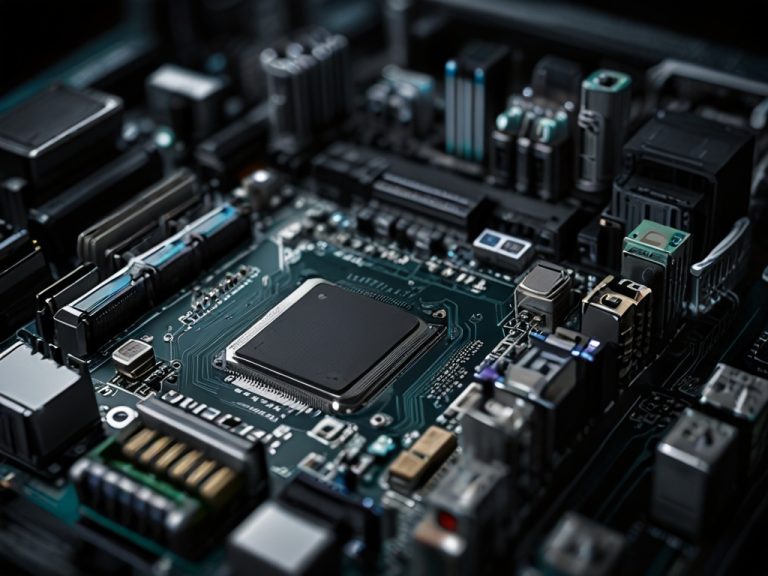With access to information on your motherboard you could do really a lot for your computer. Here we will get to know how to whether you are using a Windows, Linux or Mac operating system.
There can be cases where it’s difficult to understand or remember who the manufacturer of the motherboard that has been inserted during the building of the computer is as well as what its model is. – This is because the Device Manager is not opened, which is apparent seeing that the majority of the users do not open their computer systems. Such data is of much importance, e.g., to determine who needs medical services, whether to replace some body parts or not, or to raise money by selling the data to a third party etc. It’s Windows, macOS, as well as Linus that you are going to find information about tracing the historical origin of their names.
The process of how to locate your motherboard models on Windows.
Use the Start menu to find and launch the native Windows System Information utility, and in System Summary, you’ll see three items for the motherboard: Subject, Predicate, (Object) Version This is the key taken by the hacker to break the encryption or, in more general, this tells you all except perhaps the unique serial number.
You can access the mentioned data by clicking Command Prompt by just typing “cmd” in the Run box in the Start menu and then choosing it. Type “wmi baseboard get product,manufacturer,version,serialnumber” and hit Enter, then you will be able to see the other three parameters and the serial number.
In addition to these utilities, there are also many third-party utilities available, whereby you are provided with this information. This allows you to learn so many things which normally an ordinary tool or manual operation won’t be able to tell. Among many other applications, CPU-Z is one of the most appreciated softwares. Not only will motherboard contain all of these details but also information about memory and CPU. In addition to that, a usually free software, HWiNFO, is also available. Staff. Besides, your stats will have the CPU and Memory usage information also.
On MacOS, motherboard model is the most important thing to know.
However, compared to the former, finding this information on Mac is a more complicated task. If your Mac is older than 2021, you can use the old method: the serial number can be read from Apple menu, click “About This Mac.” around the main chip, memory capacity, and macOS version is listed. This way, you will have to input this number into an online database of a certain owning company such as PowerbookMedic to get multiple sheets of data regarding that particular laptop.
Nevertheless, it is mentionable from EveryMac from April 2021 that Apple began to utilize regular serial number codes that preclude the machine from being known and make it impossible to tell what’s inside it. The EveryMac site is where you can get model specifications by model number, ID, type number, or EMC number. EachMac explains how to get this information and they show you which exactly are the numbers that you need to use.
Modern computer motherboards and not only Apple are more complex, and many other components are, in fact, one, single components. If you are a Mac processor expert with a computer and knowledge on which type it is (About This Mac), then you have everything you may need to solve the problem, repair, and sell it. If you like to know more about this, have a look at ‘IFixit’teardowns’.
For finding out your motherboard model on Linux, follow a few steps.
On Linux, the process is just a step ahead. You’ve got to produce the terminal and then key “sudo dmidecode -t 2” and press Enter at once. Key in the scroll-over entry just under your account password, tap Enter, and all you need will be right after you- the name of the manufacturer, product title and serial number.
The most natural way is to use dmidecode tool to read dmidecode. Use “s” if you need more data, and “dmidecode | more” – for the transfer of the requested information.
Another funky command which you are to launch in a terminal, this one is called “lspci”. The last one, PCI, comes right after, and lists all the basic topics here. After that, you will see the list of hardware elements in your system attached to the corresponding motherboard (CPU, graphics, etc.).
If you are a novice and not comfortable with Terminal, you can use the other tools which are INF licensed to have a more enjoyable user experience. Amongst them the 2 most important ones are HardInfo and CPU-G.
Check the motherboard box
There is another option: the motherboard sliding in the case. That means, if you have it you will probably get many things explained there. Every box of items is unique here, but the name of the brand and the model do not have to be difficult to understand, at least the manufacturers print them in bulk. Step right up and see the fit – straightforward dips have the matching CPU model!


